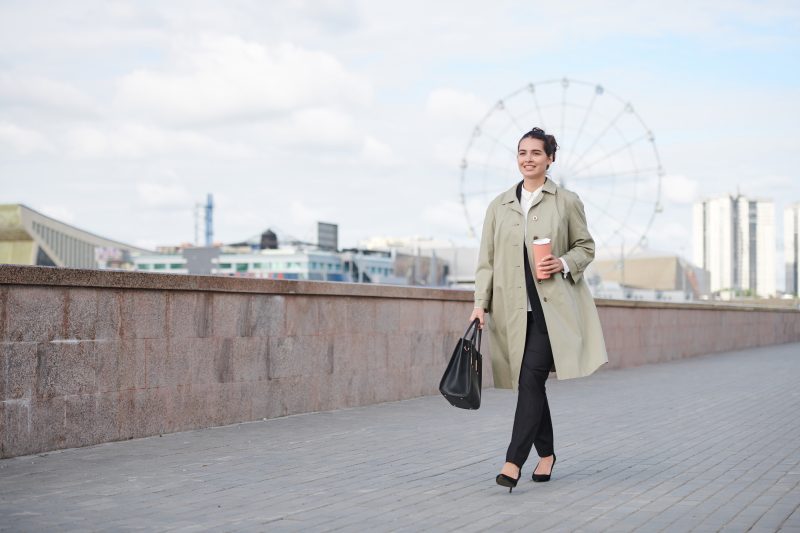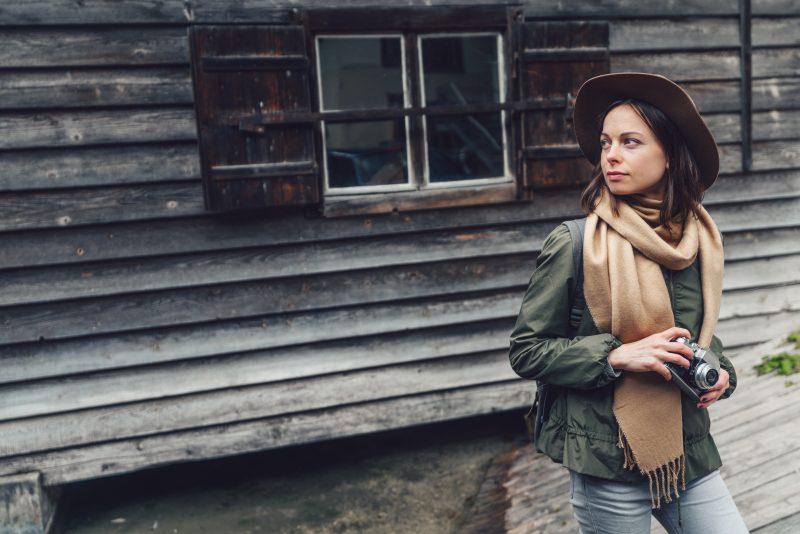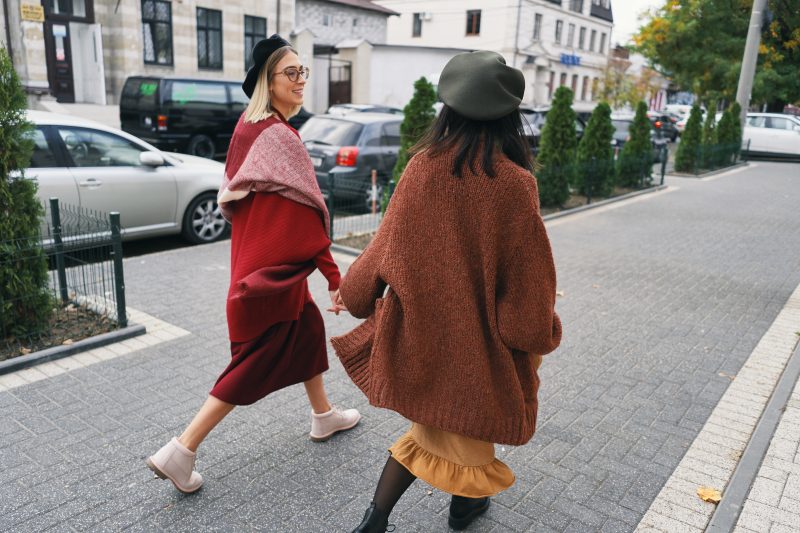The first time I went home to Sheffield after moving to London, my mum looked me up and down and said, “Well, don’t you look… London.” It wasn’t exactly a compliment. I’d arrived at the train station in what I thought was a relatively normal outfit—wide-leg black trousers, an oversized blazer, chunky boots, and a tote bag that was essentially a mobile home for all my daily essentials. Back in London, I was practically invisible in this getup. In Sheffield city centre, I might as well have been wearing a sandwich board saying “I’VE MOVED TO THE CAPITAL AND I’M VERY PLEASED WITH MYSELF ABOUT IT.”
That moment—standing on Sheffield Midland station with my mum quietly judging my pretentious London clothes—was the first time I really understood how regional British fashion works.
It’s not just about different styles; it’s about different fashion languages altogether.
What says “basic everyday wear” in London can scream “trying too hard” in Newcastle. What’s considered “dressed up” in Bristol might barely register as “made an effort” in Glasgow.
After nearly a decade bouncing between London (where I live), Sheffield (where I’m from), Manchester (where my best friend lives), Edinburgh (where my brother moved), and various other UK cities for work, I’ve developed a sort of internal British fashion map. It’s completely unscientific, riddled with sweeping generalizations, and based primarily on what I’ve observed while people-watching in train stations and high street shops across the country. In other words, take it with a hefty pinch of salt. Or, if you’re in London, some artisanal sea salt flakes from Borough Market.
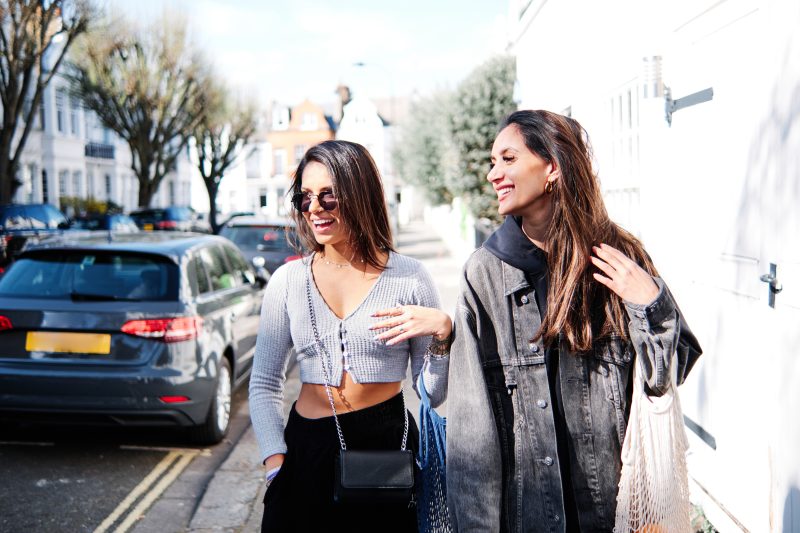
Let’s start with London, since that’s where I spend most of my time cursing the cost of living while simultaneously defending it to anyone who’ll listen. The thing about London fashion is that there isn’t just one London look—there are dozens, all coexisting in their own little ecosystem. The minimalist Scandinavian-inspired crowd in East London, with their linen and neutral tones. The old-money Chelsea set with their inherited Barbours and Hermès scarves. The streetwear enthusiasts queuing outside Supreme on Soho’s Peter Street. The creative industry types in Peckham wearing vintage pieces they swear they “just found” but definitely spent hours hunting down.
What unites Londoners, despite these tribal differences, is a certain self-consciousness about clothing. We dress like we know people are looking—because they are. London is a performance space where your outfit is constantly being evaluated by strangers on the tube (I do it, you do it, we all do it). There’s a sense that fashion matters here in a way that can feel exhausting to outsiders.
My friend Chloe, who moved from Cornwall to London for work, complained over drinks recently: “Everyone looks like they’re dressed for an Instagram post, even when they’re just getting milk.” She’s not wrong. I’ve definitely put more thought into my Saturday morning corner shop run outfits than my mum has put into entire wedding guest ensembles.
The other thing about London style is that it tends to be more trend-driven and international. Working in fashion, I get a front-row seat to the speed at which trends hit London streets compared to elsewhere. That weird scarf-as-a-top thing that was everywhere last summer? It hit London in May and had barely made it past the M25 before Londoners had already moved on to the next thing.
Manchester, by contrast, has always felt to me like it has a more consistent sense of its own style, less beholden to international trends. There’s a confidence to Mancunian fashion—a willingness to be bold, to dress up, to treat Thursday night drinks like a catwalk opportunity. My friend Leila, a born-and-bred Mancunian, laughed when I told her this theory.
“We just don’t overthink it like you London lot,” she said, while ironically spending forty-five minutes getting ready to go to Tesco. “But yeah, we do make an effort. What’s the point of having good clothes if you’re not going to wear them?”
I’ve noticed this across the North more generally—a refreshing lack of that studied casualness that Londoners often adopt. In Newcastle, Liverpool, and Manchester, there’s less of the “Oh, this old thing? I just threw it on” pretense. If someone’s wearing something fabulous, they know it’s fabulous, and they’re happy for you to acknowledge it. It’s a more joyful approach to fashion that sometimes makes London feel uptight in comparison.
Liverpool deserves its own mention here. I’ve never been to a city where going “out out” is taken so seriously as a fashion opportunity. The first time I went clubbing in Liverpool with university friends, I showed up in what I considered a perfectly acceptable going-out outfit, only to feel like I’d arrived in my pajamas compared to the local standard. The level of glamour—from the hair to the makeup to the outfits—was on another level entirely. As one Scouse friend told me, “In Liverpool, even popping to the shop is a chance to look mint.”
There’s a North/South divide in approach too. In many Southern cities outside London—Brighton, Bristol, Oxford—I’ve noticed a more relaxed, sometimes deliberately alternative aesthetic. Less concern with traditional glamour, more interest in vintage, sustainable, and individualistic dressing. Bristol in particular has that laid-back, slightly hippie-influenced vibe that makes wearing anything too “done” feel out of place.
Brighton deserves special mention as perhaps the UK city most comfortable with genuine fashion experimentation. Every time I visit, I’m struck by how liberating the atmosphere feels—like the city collectively decided that fashion rules are optional and personal expression is the only real requirement. It’s the city equivalent of that cool art teacher who let you call them by their first name.
Scotland brings its own distinct fashion landscape. Edinburgh, with its gorgeous architecture and international population, has always struck me as a city of sophisticated, practical elegance. My brother moved there five years ago and now dresses in what he calls “layers for four seasons in one day.” Glasgow, meanwhile, has an edgier fashion energy—more risk-taking, more streetwear influence, more likelihood of seeing someone wearing something that makes you think “I could never pull that off” but secretly wish you could.
What fascinates me most about British regional style is how quickly you can identify it. I can spot a group of Liverpool girls in London from across a crowded tube platform. I can tell the difference between Manchester students and London students in a heartbeat. There’s something about the overall styling, the confidence, the specific combinations that gives it away.
The pandemic and the rise of working from home has blurred some of these regional distinctions. We’re all spending more time in comfortable clothes, all shopping more online rather than in our local high streets, all being influenced by the same TikTok trends regardless of geography. But still, the regional differences persist in subtle ways.
What I find most interesting, though, is how our regional fashion identities travel with us. My Sheffield accent might have softened after years in London, but when I go home, I find myself unconsciously dressing differently—slightly more casual, less concerned with looking “fashion,” more focused on practicality. It’s like a visual code-switching that happens without me even realizing it.
I noticed this most dramatically after running into my old school friend Jaz recently. She’s lived in London even longer than I have, works for a major luxury brand, and normally looks so impeccably put-together that I feel like a walking disaster next to her. But I bumped into her on the train back to Sheffield for Christmas, and she was wearing jeans, a jumper, and minimal makeup—her “going home” uniform.
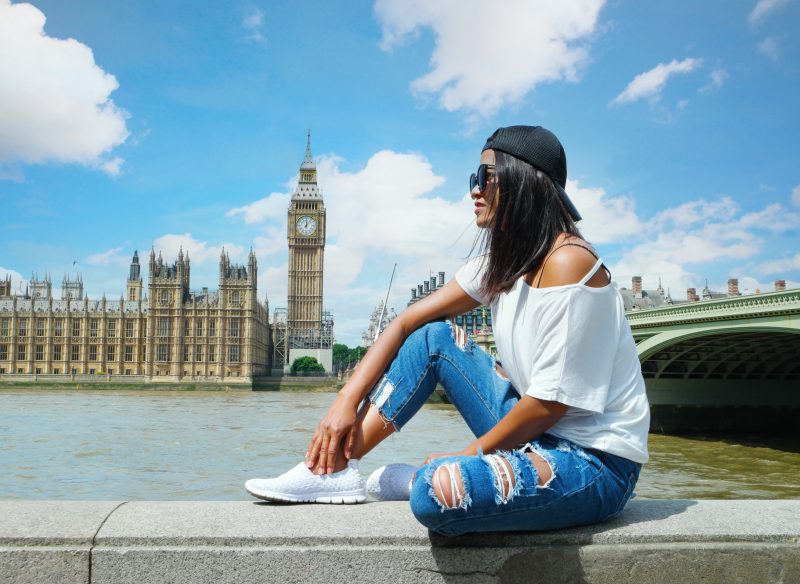
“I can’t wear my London clothes in Sheffield,” she explained when I commented on the transformation. “My brothers would take the piss forever. Plus, what’s the point? Most of my Sheffield socializing happens in the local pub where I’ve known everyone since I was five. Who am I trying to impress?”
Who indeed. And that might be the key difference in regional British fashion—who we’re dressing for, and why. London’s international, anonymous nature means we’re often dressing for strangers, for a potential Instagram moment, for the identity we want to project in a city of millions. In smaller communities, we’re dressing for people who already know us, who have context for who we are beyond our outfit choice.
There’s something freeing about both approaches. London’s anonymity allows for more experimentation, more reinvention, more trying on of identities through clothing. But there’s also something grounding about the way fashion works in communities where your personal history is already known—where your outfit is just one small part of who you are to the people around you.
I love observing these differences as I travel around the country. The subtle shifts in what’s considered normal everyday wear, what’s seen as “trying too hard,” what’s respected and what’s ridiculed. It’s like a secret language that tells you so much about local values, local history, and local character.
Next time you’re traveling between British cities, take a moment to people-watch and notice these shifts. The way Liverpool prioritizes glamour while Brighton celebrates eccentricity. The way Manchester balances trend-awareness with a distinct local identity. The way London contains multitudes—sometimes in a single Tube carriage.
These regional style differences are something to celebrate—a reminder that despite the homogenizing forces of social media and global retail chains, local character still shapes how we dress and present ourselves. It’s what makes British fashion so much more interesting than a single national aesthetic could ever be.
And yes, I still dress differently when I go home to Sheffield. My mum still occasionally looks me up and down and says, “Very London,” in that tone that suggests it’s not entirely a compliment. But these days, I take it as one anyway. After all, navigating multiple British fashion identities is a skill in itself—one that proves you know exactly where you are, and where you’ve come from.
